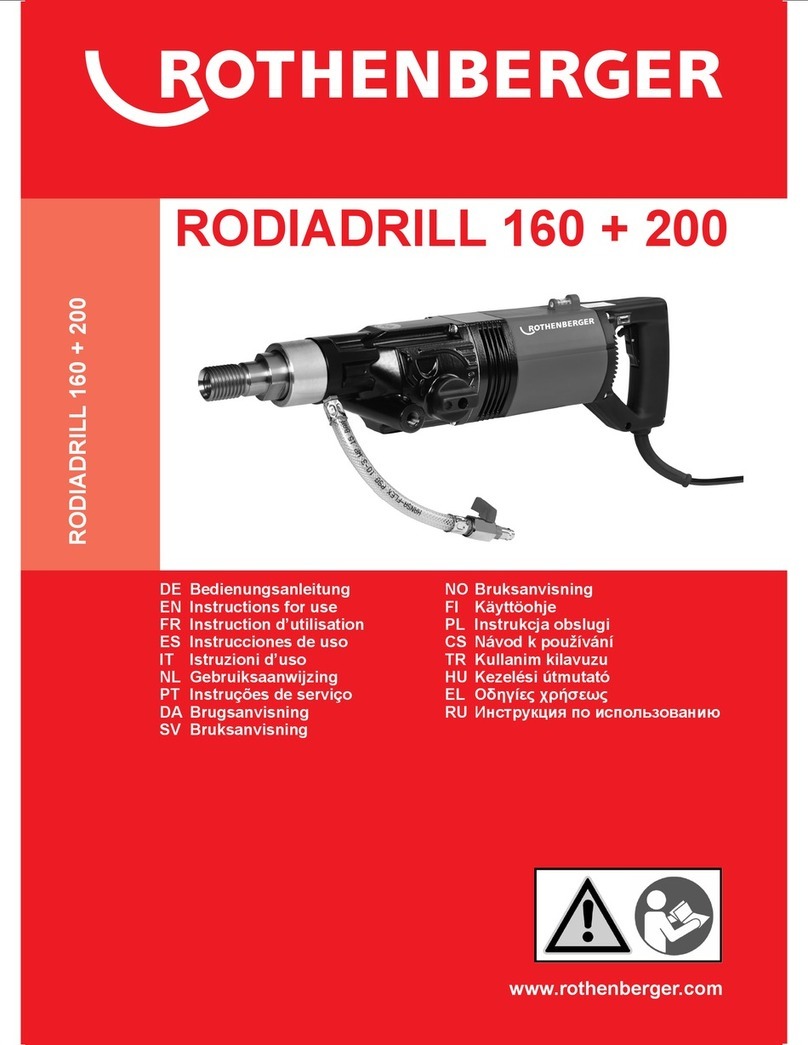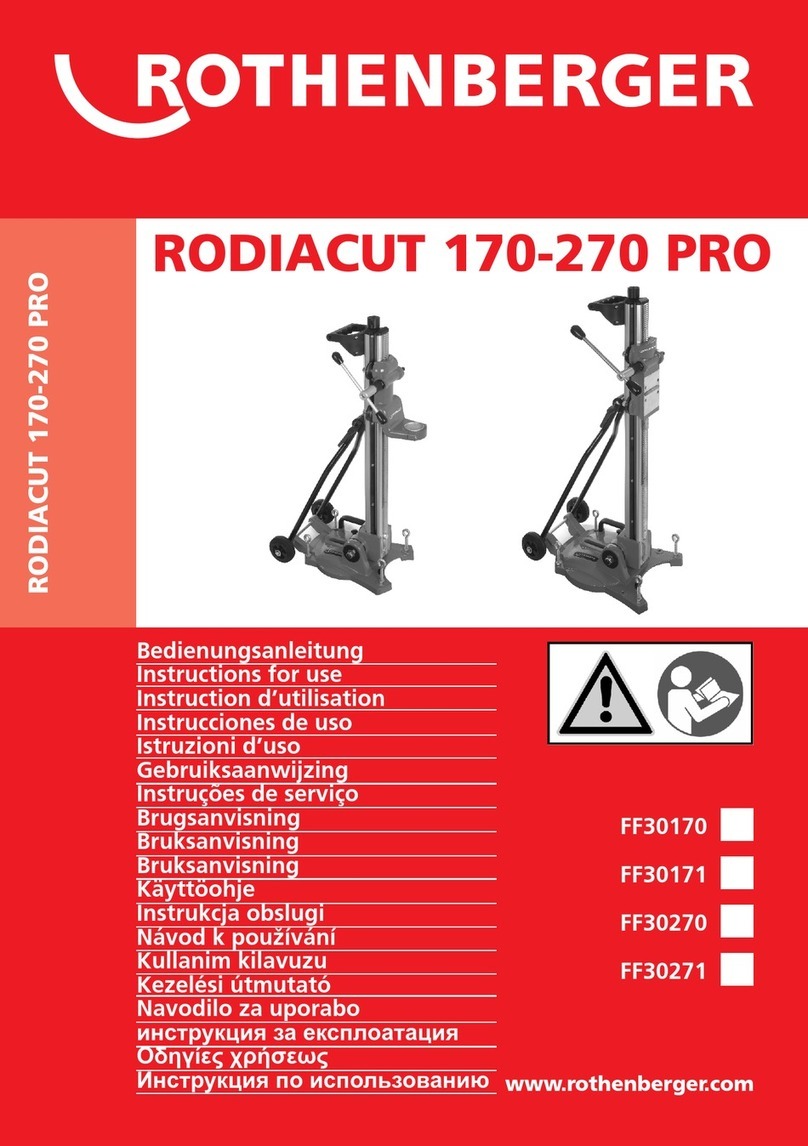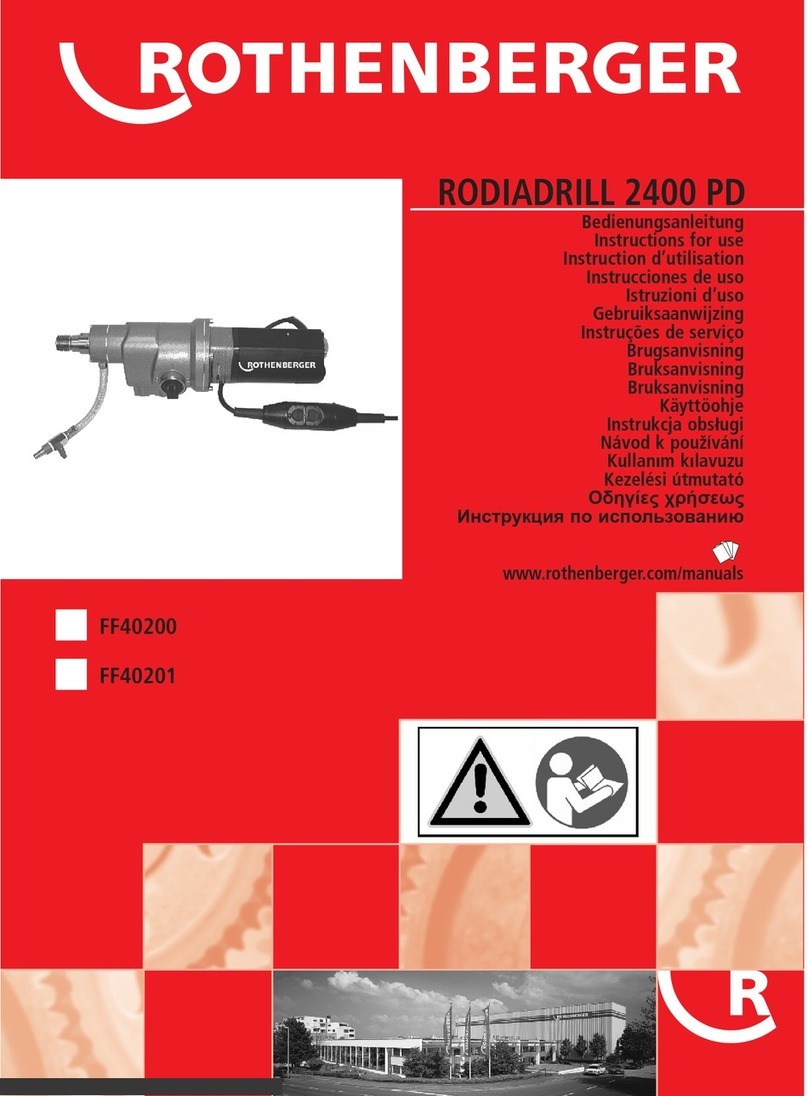
12
ENGLISH
e) Do not overreach. Keep proper footing and balance at all times. This enables better
control of the power tool in unexpected situations.
f) Dress properly. Do not wear loose clothing or jewellery. Keep your hair, clothing and
gloves away from moving parts. Loose clothes, jewellery or long hair can be caught in
moving parts.
g) If devices are provided for the connection of dust extraction and collection facilities,
ensure these are connected and properly used. Use of dust collection can reduce dust-
related hazards.
h) Do not let familiarity gained from frequent use of tools allow you to become compla-
cent and ignore tool safety principles. A careless action can cause severe injury within a
fraction of a second.
4) Power tool use and care
a) Do not force the power tool. Use the correct power tool for your application. The cor-
rect power tool will do the job better and safer at the rate for which it was designed.
b) Do not use the power tool if the switch does not turn it on and off. Any power tool that
cannot be controlled with the switch is dangerous and must be repaired.
c) Disconnect the plug from the power source and/or remove the battery pack, if de-
tachable, from the power tool before making any adjustments, changing accessories,
or storing power tools. Such preventive safety measures reduce the risk of starting the
power tool accidentally.
d) Store idle power tools out of the reach of children and do not allow persons unfamil-
iar with the power tool or these instructions to operate the power tool. Power tools are
dangerous in the hands of untrained users.
e) Maintain power tools and accessories. Check for misalignment or binding of moving
parts, breakage of parts and any other condition that may affect the power tool’s op-
eration. If damaged, have the power tool repaired before use. Many accidents are
caused by poorly maintained power tools.
f) Keep cutting tools sharp and clean. Properly maintained cutting tools with sharp cutting
edges are less likely to bind and are easier to control.
g) Use the power tool, accessories and tool bits etc., in accordance with these instruc-
tions, taking into account the working conditions and the work to be performed. Use
of the power tool for operations different from those intended could result in a hazardous sit-
uation.
h) Keep handles and grasping surfaces dry, clean and free from oil and grease. Slippery
handles and grasping surfaces do not allow for safe handling and control of the tool in unex-
pected situations.
5) Service
a) Have your power tool serviced by a qualified repair person using only identical re-
placement parts. This will ensure that the safety of the power tool is maintained.
1.3 Special safety instructions
Please wear hearing protection. Exposure to noise can lead to loss of hearing.
Please use the additional hand grips supplied with the equipment. Losing control over the
equipment can lead to injuries.
The fitted friction clutch is only triggered following a jerky blockage. For this reason please al-
ways use the additional hand grip.
Power sockets in outside areas must be fitted with residual current circuit-breakers. This is an
installation regulation requirement for your electric system. Please be sure to observe this when
using the equipment.
Always wear protective goggles when working with the equipment. We recommend protective
gloves, sturdy, non-slip shoes and an apron.
Shavings or chips must not be removed when the equipment is running.
Dust that arises during work is often harmful to health and should not be allowed to enter the
body. Please wear a suitable dust protection mask.








































